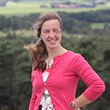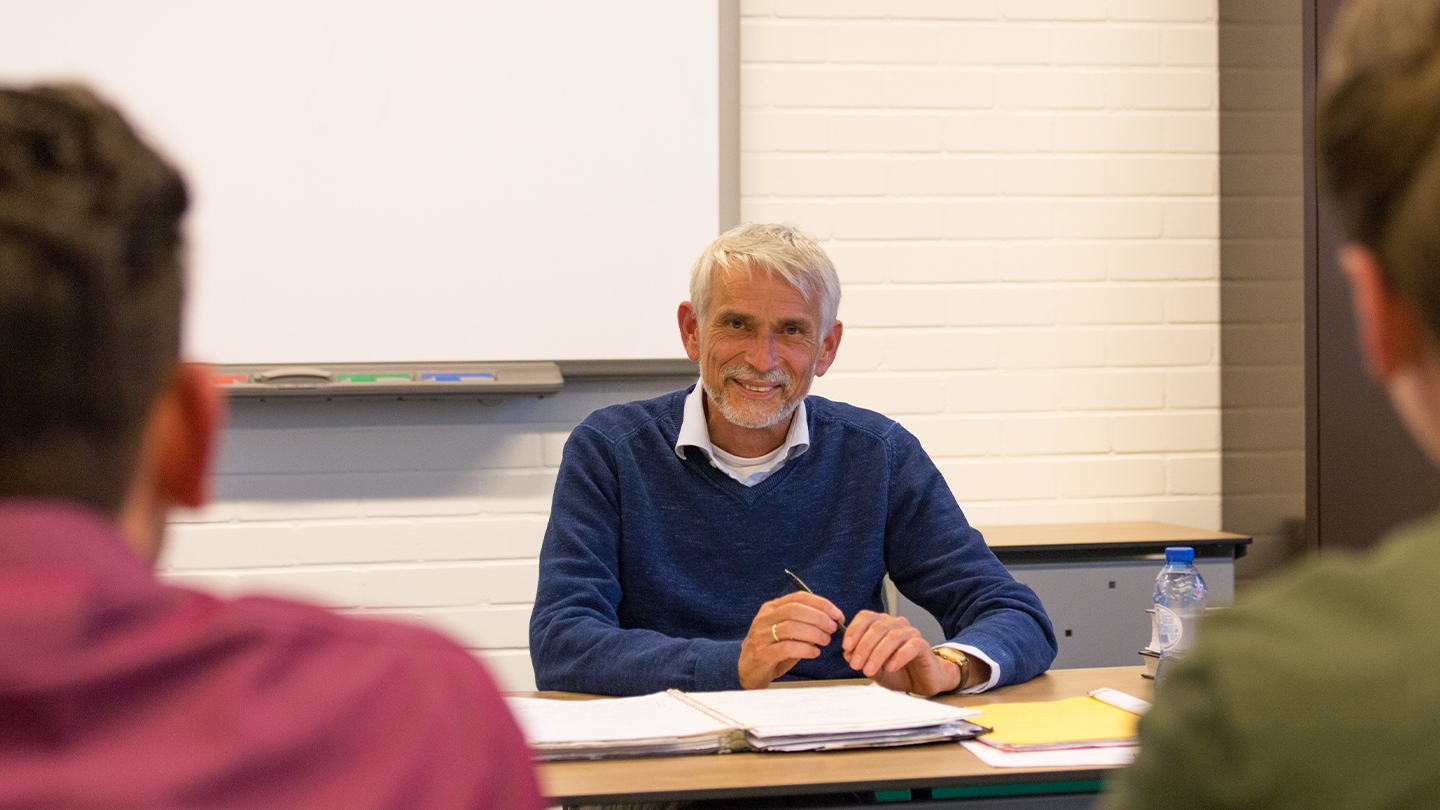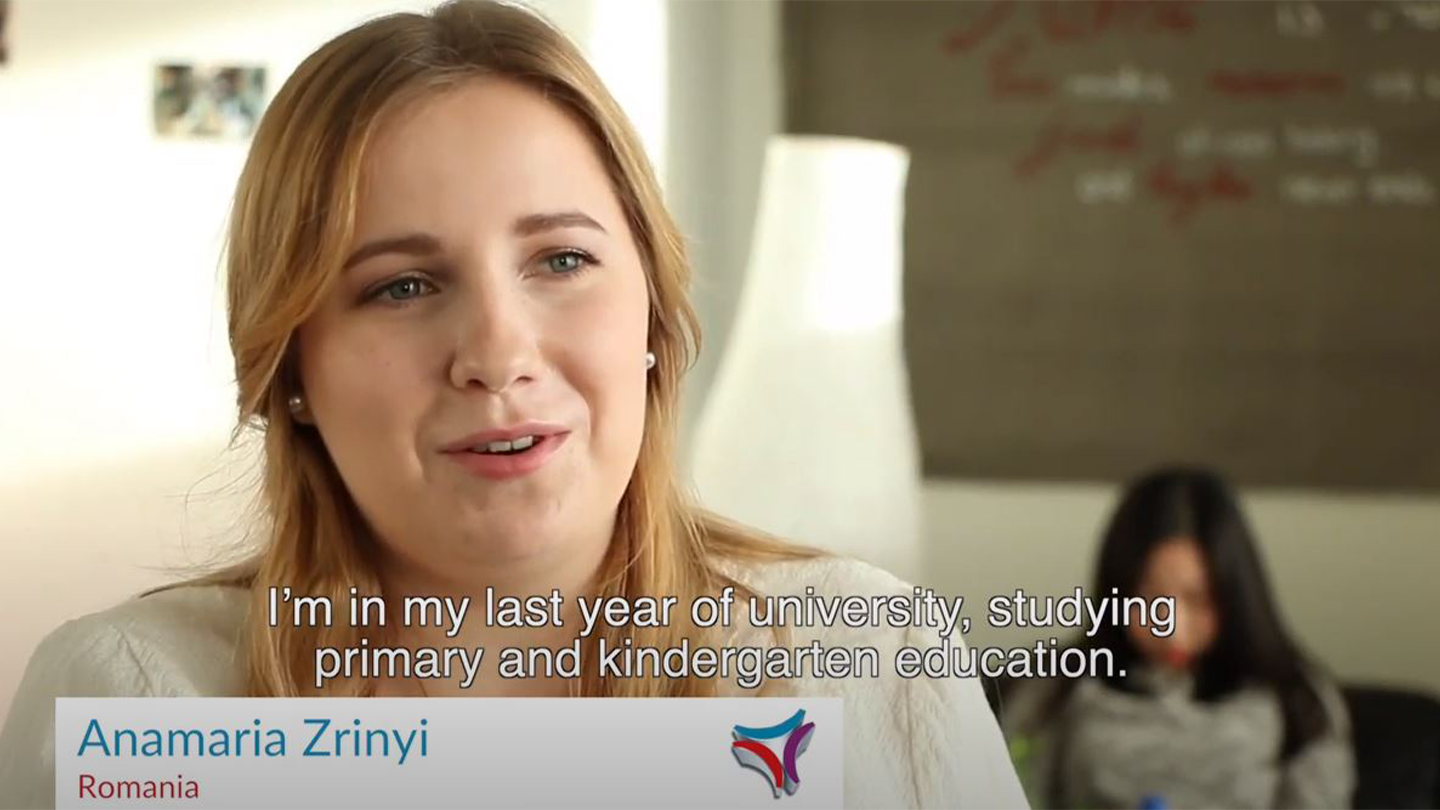Wiener melange: not quite coffee and not quite hot chocolate, I always thought. Whenever I had to choose between pressing the espresso icon and the Wiener melange on the coffee machine at work, I always went for the first. These days, however, I prefer the Wiener melange to flow into my cup. And there is a story behind that…
A backpack on my back, a huge suitcase behind me and a plane ticket in my hand: that is how I had imagined our trip to Hungary. From the moment I signed up I dreamed about walks through Budapest and intercultural encounters with students. Until everything changed. The backpack had to be swapped for my school bag, the suitcase for my laptop and the plane ticket for the hand-out from my PowerPoint. No, my destination was no longer Hungary. It became Austria. In the Driestar University building. Room 3.28.
Digital encounter
There we are, eight teacher training students. A few more minutes and our lesson is going to start. Loud crackling from the speakers lets us know the meeting is about to begin. “Schweigen, bitte!” A deep male voice urges the Austrian children to be quiet. A few seconds later, English and German words tumble over one another while we greet the Viennese teachers and students.
Kinderdijk and Keukenhof
This truly is distance learning! It feels a bit strange teaching children you see at the bottom of your PowerPoint screen. I’d much rather see from their faces how they experience their ‘journey’ through the Netherlands. We introduce each topic by showing them self-recorded video clips about Gijs and Saar. We pay virtual visits to Keukenhof, the Delta Works, Hoge Veluwe National Park, Rijksmuseum and Kinderdijk. Each of the sights include an activity. The Keukenhof activity teaches the children colours in Dutch. “In Dutch we say: ‘oranje’,” the Austrians hear from their speakers while looking at an orange tulip on our PowerPoint. With a rolling ‘R’ they repeat each word: “orrange”. It brings a smile to our faces.
A spaghetti bridge
A little while later, we present to them our royal family. Maxima, yes, they know her! By means of a game of bingo about the royal family, they dive into the world of the Oranje family. Our final topic is the Delta works. We teach the Austrians that bridges become stronger by using arches, triangles and sharing the weight. The children then build a bridge out of spaghetti. They proudly show the result in front of the camera. “Wow, very good!” comes from us. Normally, we would have walked through the classroom, looked over the children’s shoulders. We would have helped those who needed a little encouragement. Fortunately, we know that there are two enthusiastic teachers in Austria supervising the children. And in the end, we do get to enjoy the happy faces in front of the camera.
“Orrange”

Still buzzing from all that happened in the lessons, we sit down together at the end of the morning. We celebrate the moment with a cup of Wiener melange. “This really is the coffee from Vienna,” our lecturer explains. He remembers the previous years’ study trips to Vienna. “You should really try to go there some time,” he convinces me. “And visit a proper Viennese coffee house.” In the back of my mind, I think of the trip to Hungary. Budapest has special coffee houses too, apparently. I am sure: at some point I want to visit Budapest and visit Vienna. And maybe, when sipping my coffee in Vienna, I will come across one of the Austrian children. And hear: “orange” while enjoying a Wiener melange.




